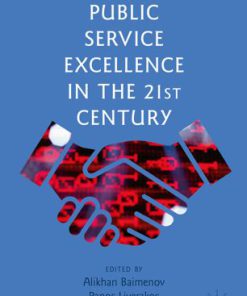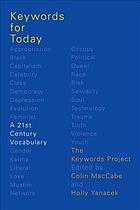Public Participation for 21st Century Democracy 1st Edition by Tina Nabatchi, Matt Leighninger ISBN 9781118688533 1118688538
$50.00 Original price was: $50.00.$25.00Current price is: $25.00.
Public Participation for 21st Century Democracy 1st Edition by Tina Nabatchi, Matt Leighninger – Ebook PDF Instant Download/Delivery: 9781118688533 ,1118688538
Full download Public Participation for 21st Century Democracy 1st Edition after payment

Product details:
ISBN 10: 1118688538
ISBN 13: 9781118688533
Author: Tina Nabatchi, Matt Leighninger
Public Participation for 21st Century Democracy 1st Edition Table of contents:
Part One Participation in a Rapidly Changing Democracy
Chapter One Citizenship, Outside the Public Square
Confident, Frustrated, Connected, and Lonely: The Curious Case of the 21st Century Citizen
Public Problem-Solvers, Who Distrust the Official Public Problem-Solvers
Civil in Private, but Not in Public
Connected—and Lonely
The Failing Infrastructure of the Public Square
Where We Go from Here
Summary
References
Chapter Two Good or Bad? Charming or Tedious? Understanding Public Participation
Defining Public Participation and Exploring Its Modern Forms
Thick Participation
Thin Participation
Conventional Participation
Why Does Conventional Participation Cause Problems?
What Is “Good” Participation?
How Does Good Participation Solve Problems?
Why Bad Participation Happens to Good People
Summary
References
Chapter Three Pictures from a (R)evolution: The Fitful Development of Public Participation in the Un
The Democratic Roots of Participation in the Ancient World
Democracy in America Before Columbus
Democracy and Republicanism in the Founding of the United States
Participatory Populism in 19th Century America
The Expansion of Expertise
Participation in the War on Poverty
Not Citizens, but “Customers”
Not in My Back Yard (or School, or Neighborhood)
Why Can’t We All Just Get Along? (and, Is That Enough?)
Participatory Tactics on the 2008 Campaign Trail, but Not the White House
Bigger Governance Through Technology
A Final Snapshot: The Current State of Our Participation Infrastructure
Empowering and Activating Leaders and Networks
Assembling Participation Building Blocks
Providing Systemic Supports
Summary
References
Part Two Participation in Action
Chapter Four Participation in Education
The Development of Participation in Education
Family Engagement in Student Learning
Redistricting, School Closures, and Funding
School Standards and Testing
Achievement Gaps
School Safety and Bullying
Official Settings for Participation in Education
District Level
School Level
Classroom Level
Strengthening the Infrastructure: Leaders and Networks for Participation in Education
Strengthening the Infrastructure: Building Blocks for Participation in Education
Disseminating Information About Schools and Education
Gathering Input and Data
Discussing and Connecting
Enabling Family and Student Decision Making
Enabling Community Decision Making on Education Issues
Encouraging Public Work
Strengthening the Infrastructure: Systemic Supports for Participation in Education
Training and Skill Development
Professional Incentives for Educators and Other Participation Leaders
Policies and Procedures
Funding and Budgeting
Summary
References
Chapter Five Participation in Health
The Development of Participation in Health
Messaging and Healthy Behavior
The “Healthy Communities” Movement
Mapping Inequities in Health
Engaging Citizens in Health Policymaking
Patient Engagement and Patient-Centered Care
Official Settings for Participation in Health
Community Level
Hospital/Clinic Level
Patient/Citizen Level
Strengthening the Infrastructure: Leaders and Networks for Participation in Health
Strengthening the Infrastructure: Building Blocks for Participation in Health
Disseminating Information About Health
Gathering Input and Data
Discussing and Connecting
Enabling Patient and Family Decision Making
Enabling Community Decision Making
Encouraging Public Work
Strengthening the Infrastructure: Systemic Supports for Participation in Health
Training and Skill Development
Professional Incentives for Health Practitioners and Other Participation Leaders
Policies and Procedures
Funding and Budgeting
Summary
References
Chapter Six Participation in Planning and Land Use
The Development of Participation in Planning and Land Use
Major Zoning Decisions
Community and Neighborhood Visioning
Community Development Planning
Reporting Problems and Prioritizing Improvements
Official Settings for Participation in Planning and Land Use
Community Level
Neighborhood Level
Strengthening the Infrastructure: Leaders and Networks for Participation in Planning
Strengthening the Infrastructure: Building Blocks for Participation in Planning
Disseminating Information About Planning and Land Use
Gathering Input and Data
Discussing and Connecting
Enabling Neighborhood Decision Making
Enabling Community Decision Making
Encouraging Public Work
Strengthening the Infrastructure: Systemic Supports for Participation in Planning
Training and Skill Development
Professional Incentives for Planners and Other Participation Leaders
Policies and Procedures
Funding and Budgeting
Summary
References
Chapter Seven Participation in State and Federal Government
The Development of Participation in the Legislative Branch
The “Mad and Angry Folks”
When Other Organizations Convene, Legislators (Sometimes) Listen
The Challenge of Scale and Policy Connection
The Development of Participation in the Administrative Realm
The Legal Framework for Participation
“Outside Pressure” and the “Potentially Concerned Public”
The “Best Brains Available”
The Open Government Directive
The Best Brains Online
Official Settings for Participation in State and Federal Government
Interactions with Elected Officials
Avenues for Participation in State and Federal Agency Decisions
Avenues for Participation on Local Decisions Made by State and Federal Agencies
Strengthening the Infrastructure: Leaders and Networks for Participation in State and Federal Govern
Strengthening the Infrastructure: Building Blocks for Participation in State and Federal Government
Disseminating Information
Gathering Input and Data
Discussing and Connecting
Enabling Community Decision Making
Enabling State and Federal Decision Making
Encouraging Public Work
Strengthening the Infrastructure: Systemic Supports for Participation in State and Federal Governmen
Training and Skill Development
Professional Incentives for State and Federal Officials
Funding and Budgeting
Policies and Procedures
Summary
References
Part Three Participation for Democracy, Present and Future
Chapter Eight Participation Scenarios and Tactics
Trapped in the Foxhole: Conventional Participation
Planning for Participation: Key Questions to Answer
Who Should Participate and How Will Participants Be Recruited?
How Will Participants Interact with Each Other and with Decision-Makers?
What Information Do Participants Need to Be Prepared?
How Will Participation Impact Policy Decisions, Problem-Solving Efforts, or Other Kinds of Public Ac
Participation Scenarios: Matching the Goals of “Engagers” and “Engaged”
Scenario 1: Participation Leaders Want to Inform the Public
Scenario 2: Participation Leaders Want to Gather Public Input, Feedback, and Preferences
Scenario 3: Participation Leaders Want Citizens to Generate New Ideas or New Data
Scenario 4: Participation Leaders Want to Support Volunteerism and Citizen-Driven Problem Solving
Scenario 5: Participation Leaders Want to Make a Policy Decision
Scenario 6: Participation Leaders Want to Develop a Plan or a Budget
Participation Tactics: Matching Approaches to Scenarios
Tactic 1: Social Media Aggregation
Tactic 2: Surveys and Polls
Tactic 3: Focus Groups
Tactic 4: Online Platforms for Reporting Problems and Gathering Data
Tactic 5: Crowdsourcing and Contests
Tactic 6: Crowdfunding and Mini-Grants
Tactic 7: Serious Games
Tactic 8: Wiki-Based Platforms for Collaborative Mapping or Writing
Tactic 9: Using Online Networks to Connect with Others
Tactic 10: Collaborative Planning
Tactic 11: Participatory Budgeting
Tactic 12: Public Deliberation
Summary
References
Chapter Nine Assembling Participation Infrastructure
Connecting the Building Blocks for Participation
Participation Commissions
Systemic Supports for Participation
Local Participation Ordinances
Citizens’ Academies and Other Participation Training Programs
Online Participation Dashboards
Envisioning Stronger Participation Infrastructure
Making It Clear That Participation Is a Cross-Sector Priority
Using Plainer, More Compelling Language
Encouraging Both Progressive and Conservative Visions
Using Visual Aids, Like Charts and Maps
Encouraging Artistic Expressions of Democracy
Small “d” democratic Planning for Small “d” democratic Infrastructure
Summary
References
Chapter Ten Building Democracy
Where Is Democracy Headed?
Trend 1: People and Information
Trend 2: People and Public Money
Trend 3: People and Cultural Difference
What We are Talking About When We Talk About Participation
What Kind of Democracy Do We Want?
Summary
References
Name Index
Subject Index
People also search for Public Participation for 21st Century Democracy 1st Edition:
21st century democracy
civic participation in a representative democracy news
in a democracy citizen participation is a
democracy participation
Tags:
Tina Nabatchi,Matt Leighninger,Public Participation,21st Century Democracy
You may also like…
Politics & Philosophy
Education Studies & Teaching
Educational Philosophy for 21st Century Teachers Thomas Stehlik
Politics & Government
Politics & Philosophy
Applied Demography and Public Health in the 21st Century 1st Edition Nazrul 3319436880 9783319436883
Politics & Philosophy - Anthropology
Biology and other natural sciences - Plants: Agriculture and Forestry
Politics & Philosophy
Hobbes Today Insights for the 21st Century Hobbes by S. A. Lloyd 1107000599 978-1107000599
Politics & Philosophy - Government & Politics












